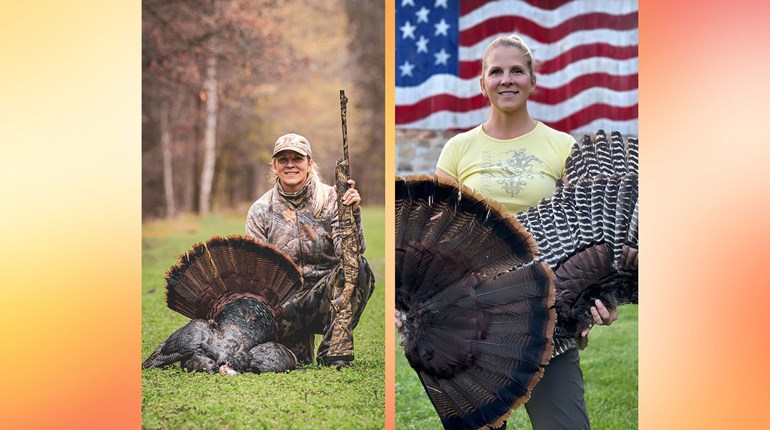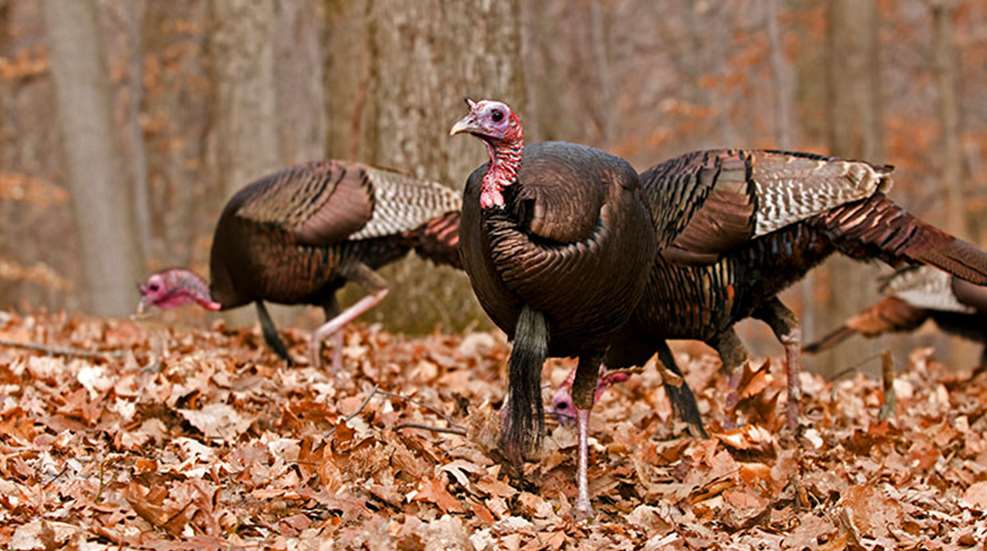
They’d surprised us, these turkeys. We’d spent the better part of the last hour calling at six mature gobblers that were still stubbornly roosted in tree about 80 yards away, on the other side of a clear-cut, only to have this group of gobblers—jakes and toms alike—come sneaking in on our left. Had their sights not been set on our decoys, they almost certainly would’ve made us. Instead, I had the time to ease my 20-gauge around, wait for a clear shot on an adult bird and ultimately fill my 2016 fall turkey permit in early 2017. See, this wasn’t a spring hunt; it was a January hunt. And after giving “winter” turkey hunting a try, there was only one question on my mind: Why wait for spring?
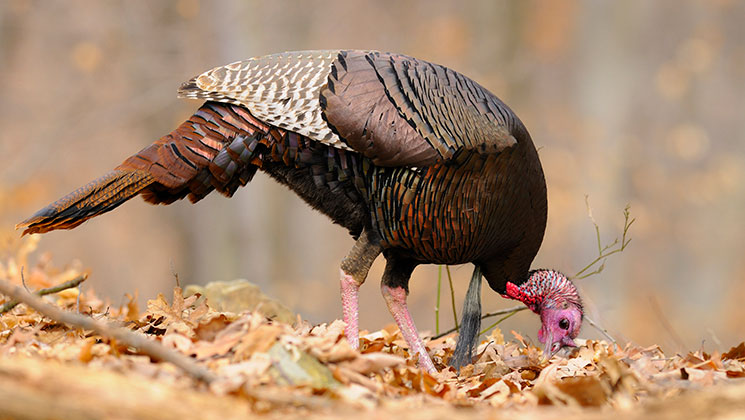
I’d been somewhat intrigued, somewhat confused when I got the invite to join Rob Keck, director of conservation for Bass Pro Shops, for a turkey hunt in Butler County, Kan. That part wasn’t out of the ordinary, but the late-January timing certainly was. Though there’s certainly no shortage of states that let you kill turkeys in the fall—which often just makes the birds potential targets of opportunity for bored deer hunters—I’d never considered hunting gobblers in the dead of winter. If you want to get a bird that’ll really work, you’ve got to wait until spring, right? But when one of the most accomplished turkey hunters in the country—more on that in a minute—tells you it’s a sure thing, you don’t say no. And so I packed far heavier gear than I ever imagined I’d need for a turkey hunt and made my way to the Sunflower State.
Rob retrieved me from the airport on what wound up being the warmest day of my stay. Our first order of business was purchasing the proper licenses and tags—something to be mindful of if you’re looking to try your hand at a winter hunt. There are numerous states across the nation that have a “winter” season. Some, like Kansas and Virginia, simply have fall seasons that extend into the new year. Others, like Maryland, have short, dedicated winter seasons. In Kansas, the fall turkey season usually runs through the end of the following January, meaning on top of the appropriate licenses I needed a fall 2016 turkey permit. All the right paperwork in hand, we checked into our hotel and grabbed lunch. It was there that Rob got me up to speed on the project he was spearheading: telling the world about winter turkey hunting.
Anyone who’s ever hunted spring birds know the joys and the many, many frustrations it can bring. Hot gobblers out looking for love routinely create new turkey hunting addicts each year—so how could it get any better? Because winter turkey hunting, Rob swore, was “like spring turkey hunting on steroids.”
The first key is in the number of birds. In the spring, mature gobblers split off to find hens, and eventually form small mating groups of their own. In the fall and winter, though, birds come together into far larger flocks, and male birds aren’t nearly as aggressive toward each other. They’ll still fight, that’s for sure, but they’ll ultimately stick together. It’s not out of the question to come across large groups of gobblers and jakes in the fall, living in relative harmony, just months after the most-dominant of them were sparring with each other. These large groups of birds are easier to find and easier to pattern.
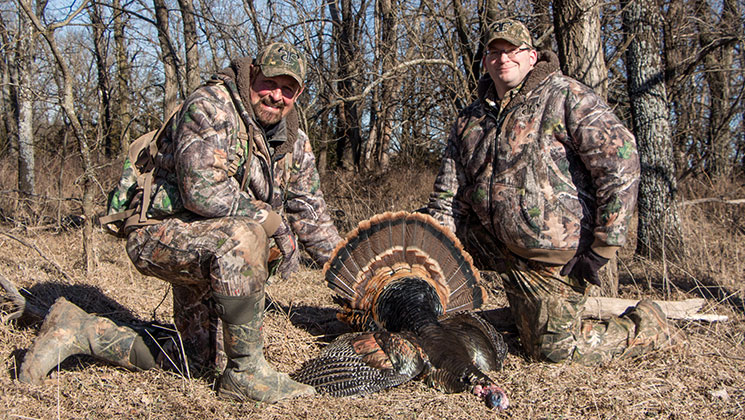
The second thing to know: Those gobblers are still gobblers. Though breeding season is still months away, they’re going to gobble and strut. A turkey will be a turkey. It’s still possible to get their blood up, too—which is how you draw them away from those big, safe groups and give them a case of lead poisoning. Having killed more than a few birds in his life, Rob had a game plan.
I didn’t hesitate to follow his lead. I’d wager no one knows turkeys quite like Rob Keck. Though he’s now the director of conservation for Bass Pro Shops, his background rests squarely in turkey territory. He spent 27 years as the CEO for the National Wild Turkey Federation, where he played a major role in the restoration of the wild turkey across the United States. Example A: While in camp he told me about how he oversaw the return of wild turkeys to my home state of Delaware, and then a few years later became the first nonresident to kill a bird there. Rob also served on the Sporting Conservation Council during the George W. Bush administration, where he advised both the secretaries of Interior and Agriculture on conservation matters. Like most of us, he’ll hunt most anything he can find time for, though the turkey is his passion. In the past he’s hosted and produced the “Turkey Call” and “Turkey Country” TV series, and he’s the first known hunter to kill a wild turkey in every state with a turkey season. After spending just a few days in his company, I learned this truth: Rob’s probably forgotten more about turkeys than I’ll learn in my lifetime.
His strategy for winter birds: decoys—gobbler decoys, at that, including a few homemade fans Rob had made from the spoils of previous hunts. We were on private land, and were the only folks doing any hunting, which made such tactics safe to practice. When we’d settle on a spot, we’d set out our little group of dekes, which varied in brand but had a singular goal: to tick off the larger groups of local gobblers we were hunting. See, though male birds aren’t quite as territorial in the fall, the big groups can’t help but want to check out, and sometimes rough up, the new guys on the block. Backed by Rob’s calling, which got their attention (and shouldn’t be underrated, given that he’s a world-champion caller), our setup proved irresistible whenever we got on birds.
On the first afternoon of our hunt, we spent an hour or so messing with a group of about 40 gobblers, trying to catch their eye. They were soon joined in the cornfield by what must have been 150 hens. We were surrounded. A few of the jakes eventually caught sight of our setup, and I was treated to a sight unlike anything I’d ever seen: Dozens of male birds rushed our dekes to get a closer look, some getting within seven steps of where Rob and I sat, hidden in the brush. Despite the presence of a few true monsters, I couldn’t get a shot. There simply wasn’t a safe one to take—there were too many birds, too close. Instead, I just sat back and enjoyed the show.
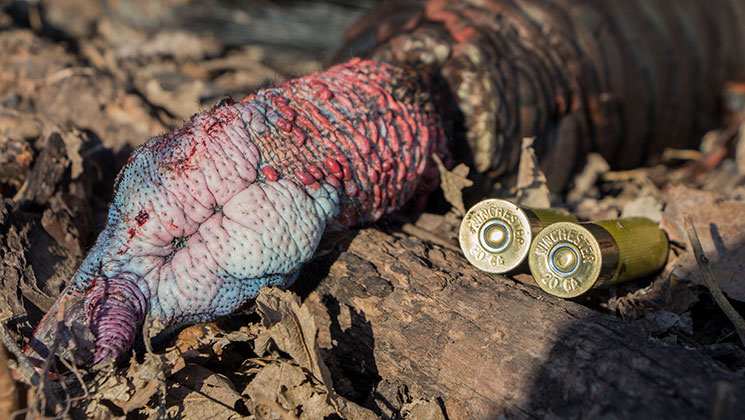
The following morning, though, was a different story. We’d found those six mature birds I mentioned and then wound up being surprised by their comrades. But as a pack of dumb ol’ jakes attacked the decoys we’d laid out, a more mature gobbler from the group that’d snuck in stayed toward the fringes of the action, some 30 yards out. After a few moments I was given a safe lane to shoot, and he didn’t get any older.
His buddies skedaddled at the shot, and we rose from our hiding place to retrieve my bird. We snapped a few photos, Rob said a quick prayer and we retreated to basecamp, where warm coffee awaited. It was cold as hell, but it was well worth it. Trust me: If turkey hunting is your passion, you may just find the winter season to really be the most wonderful time of the year.













